Archive for the ‘Maritime History’ Category
John Woo’s Epic Film…Red Cliff. Civil War in Ancient China
Every once in a while, a movie comes along that takes the visual depiction of battle to a new level (Braveheart, Saving Private Ryan). John Woo’s epic film, Red Cliff, does just that. Based on the actual Battle of Red Cliffs (see the Red Cliff Wiki here) that took place in the winter 208 CE, the film depicts the conflict between northern Chinese Prime Minister Cao Cao, and a coalition of southern forces led by Liu Bei and Sun Quan. While fact and fiction undoubtedly blur, the film is based on Records of Three Kingdoms, which provides a more historical view of the epic battle than that depicted in the novel, Romance of the Three Kingdoms. Its American distributor is Magnolia Pictures who kindly sent me a review copy last week.
This film demands your full attention. It depicts both land-based and naval warfare in an age when weapons included sword and shield, bow and arrow, spear, and fire bombs. Woo went BIG in imagery and battle size. Cao Cao was reported to have brought 800,000 soldiers to invade the south on twently thousand ships so Woo used Army soldiers to supplement extras. Animators did the rest. Those interested in the animation techniques used in creation of the film will find interesting Bill Desowitz‘s article “The Battle of Red Cliff — John Woo Style!,” on the Animation World Network here. Pay particular attention to the Tortoise Shell Formation battle (below), one of the highlights of the film.
Animator’s also created the immense fleet of ships on which Cao Cao transported his army south. The climatic naval battle is beyond anything I’ve seen on film. Your attention is also required because the film, made in Mandarin, uses English subtitles that are occasionally difficult to see.
Wildly popular in China since its 2008 release, Red Cliff is now available to American audiences in select theaters and through video on demand (VOD) in a abridged format (the original film is in two parts and runs over four hours).
The cast, while perhaps less familiar to American audiences, includes some of the most popular actors on the planet.
Zhang Feng-Yi (Prime Minister Cao Cao)
Tony Leung Chiu-Wai (Strategist and warrior Zhou Yu (Ye))
Takeshi Kaneshiro (Shu strategist Zhuge Liang)
Yong You (Liu Bei)
Chang Chen (Sun Quan)
Vicky Zhao Wei (Wu princess Sun Shang Xiang)
Lin Chi-Ling (Zhou Yu’s wife, Xiao Qiao)
Shido Nakamura (Gan Xing) [also appeared in Letters from Iwo Jima]
Hu Jun (Zao Yun)
HIGHLY RECOMMEND
Hunting Books for Independent Study … Civil War Naval History
I’m exploring options for topics for an independent study course. This one is floating to the top of what I’d like to study. Any other books my readers might suggest are welcome.
Naval Operations of the American Civil War
Reading Pace: 1 book or equivalent primary sources per week or two weeks depending on length (max 16)
Course Evaluation: Book Review for each book read and Final essay
Beginning Reading List (Not complete and to be agreed on with professor):
Bennett, Michael J. Union Jacks: Yankee Sailors in the Civil War. Chapel Hill: University of North Carolina Press, 2004.
Brooksher, William R. War Along the Bayou: The 1864 Red River Campaign in Louisiana. Washington: Brassey’s, 1998.
Chaffin, Tom The H. L. Hunley (Hill and Wang, 2008)
Forsyth, Michael J. The Red River Campiagn of 1864 and the Loss by the Confederacy of the Civil War, Jefferson, NC: McFarland, 2002.
Friend, Jack. West Wind, Flood Tide: The Battle of Mobile Bay. Annapolis: Naval Institute Press, 2004.
Joiner, Gary D. One Damn Blunder from Beginning to End: The Red River Campaign of 1864. Wilmington, DE: Scholarly Resources, 2003.
Lewis, Charles Lee. David Glasgow Farragut: Our First Admirial. 2 vols. Annapolis: Naval Institute Press, 1943.
Merli, Frank J. Great Britain and the Confederate Navy, 1861 – 1865 (Indiana University Press, 2004)
—-, The Alabama, British Neutrality, and the American Civil War (Indiana University Press, 2004)
Symonds, Craig L. Confederate Admiral: The Life and Wars of Franklin Buchanan. Annapolis: Naval Institute Press, 1999.
—-,Lincoln and His Admirals (Oxford University Press, 2008)
Tucker, Spencer C. Andrew Foote: Cvivil War Admiral on Western Waters. Annapolis: Naval Institute Press, 2000.
Valuska, David L. The African American in the Union Navy: 1861-1865. New York: Garland, 1993.
Weddle, Kevin. Lincoln’s Tragic Admiral: The Life of Samuel Francis Du Pont, Charlottesville: Universtiy of Virginia Press, 2005.
Civil War High Tech: Excavating the Hunley and Monitor from MIT World
Always on the hunt for opportunities to inform my understanding of history, I’ve hit a gold mine. In addition to my fascination with the Civil War, I am equally passionate about maritime history and am a degreed engineer. Those three fields of study converge in a fascinating symposium hosted by the DeepArch Research Group in Technology, Archaeology and the Deep Sea at MIT in April 2003 which they have made available for viewing on MIT Earth (TM).
The symposium, Civil War High Tech: Excavating the Hunley and Monitor gives us an opportunity to hear from the senior archaeologist on the recovery of the C.S.S. Hunley, Maria Jacobsen. For those of you familiar with Civil War Naval history, the CSS Hunley will not be a new name. For those not, its story is nothing less than remarkable. A Confederate submarine, it was lost after driving a mine into the hull of USS Housatonic, detonating it, and sending the ship to the silty bottom of Charleston Bay in five minutes. But the Hunley was lost as well, only to be found, recovered, and excavated in the last decade or so.
I have made it through the first presentation on the Hunley (wow) and hope to watch the second half of the symposium on the Monitor. But for now, this from the MIT site:
Civil War High Tech: Excavating the Hunley and Monitor
- Moderator: Merritt Roe Smith
- Maria Jacobsen
David A. Mindell PhD ’96
Brendan Foley PhD ’03
About the Lecture
In the last few years, archaeologists have recovered two of the Civil War’s most ingenious inventions: the Union ironclad warship Monitor and the Confederate submarine Hunley. In this symposium panelists discuss the newest technology projects that have brought these inventions to light from the sea depths, and what they can teach about technology and the Civil War.
Submarine CSS H. L. Hunley [1863-1864]
- Submarine built by Horace L Hunley

- First submarine to destroy an enemy ship
- All three crews died aboard although several from the first crew were able to escape.
- Lost off of Charleston after sinking the USS Housatonic with a spar torpedo
- Remains discovered in 1995 by NUMA
- Recovered August 8, 2000
Photo credit: Confederate Submarine H.L. Hunley (1863-1864) U.S. Naval Historical Center Photograph [#NH999]
You may be interested in previous posts I’ve made on the Hunley. My first was the following:
On Dog Tags, Sunken Confederate Subs, and Graves Registration
The H.L. Hunley: The Secret Hope of The Confederacy
The good folks at Hill and Wang sent me a review copy of Tom Chaffin’s book, The H.L. Hunley: The Secret Hope of the Confederacy which arrived today. I’m really jazzed about this since I wrote a post on the Hunley a while back (see On Dog Tags, Sunken Confederate Subs, and Graves Registration). Fascinating stuff.
The book’s official webpage is here and includes some interesting features including interactive blueprints of the sub.
Hill and Wang
Published: September 2008
ISBN: 978-0-8090-9512-4
ISBN-10: 0-8090-9512-2
Trim: 5 1/2 X x 8 1/4 inches
352 pages, 16 Pages of Black-and-White Illustrations/2 Maps/Appendix/Notes/Bibliography/Index
I found Professor Chaffin’s credentials (see his page at the University of Tennessee here) impressive and will enjoy reading the text version of his dissertation as well.
Ph.D., U.S. History, May 1995; Emory University. Dissertation: “‘Buffalo Hunt’: Narciso López and the Clandestine U.S. War against Cuba, 1848-1851.”
M.A., American Civilization, 1982, New York University. Thesis: “Toward a Poetics of Technology: Hart Crane and the American Sublime.” B.A., English, “with honors,” and philosophy minor, 1977, Georgia State University.
Lincoln and His Admirals
I’m very pleased to have received a review copy yesterday of Lincoln and His Admirals by Craig L. Symonds from the terrific folks over at Oxford University Press. You can view the book’s listing at OUP here. Being a student of both the American Civil War AND maritime history, I can’t think of a better read. I’m reserving this one for the Christmas holiday. This will also be my first introduction to the work of Craig L. Symonds. More to come on my review.
Hardcover: 448 pages
Publisher: Oxford University Press, USA (October 17, 2008)
ISBN-10: 0195310225
ISBN-13: 978-0195310221
Dimensions: 9.2 x 6.3 x 1.5 inches
Link Updates
Over the weekend, I added quite a few links to the right navbar which I use to keep myself organized. Here’s a quick run down of several of the new adds. There’s a theme in here somewhere….
- Links to all state historical societies
- The Historical Maritime Society
- Smith’s Master Index to Maritime Museums (WOW!)
- Portsmouth Historic Dockyards (GO if you get a chance!)
- Five excellent new links to sites related to slavery filed under “Slavery Links”
And so the reading begins… in earnest
Historiography is a wrap. The new class, Studies in U.S. Military History, started yesterday. There was a slight change in texts. For the Korean War, Roy E. Appleman’s East of Chosin: Entrapment and Breakout in Korea, 1950 will be used rather than the one I mentioned earlier.

I also picked up a book on the recommended reading list, One Hundred Years of Sea Power: The U.S. Navy, 1890 – 1990 by George W. Baer. I’ve added both to my virtual bookshelves here.
The class will be a challenging one. Thirteen books will be required reading as noted in my last post here. The pace will be more than one book per week in addition to writing assignments. Best get to it!
First up – jumping into Millett and Maslowski’s For the Common Defense: A Military History of the United States of America – which will be the primary text for the course. Just a chapter this week dealing with the period between 1607 and 1689.

Second – reading in its entirety Jill Lepore’s The Name of War: King Philip’s War and the Origins of American Identity which was winner of the Bancroft Prize in 1999.

Addition to My Blogroll
I’ve recently added ELEKTRATIG to my blogroll. He and I have cross-referenced several posts on topics like the inevitability of the American Civil War (available here) and he has always provided thoughtful comments.
Today, he has a post on George Bancroft that you can read here which speaks to the special relationship that Bancroft had with President James Polk. Bancroft was instrumental in Polk receiving the democratic nomination in 1844 because he was able to swing the Massachusetts vote his way. Bancroft became, as a result, the most powerful Democrat in Massachusetts.[i]
As Elektratig mentions, today not a lot of people know of Bancroft but for citizens of the nineteenth century he was, as biographer Robert Canary put it, “one of the first great American historians and one of the most widely read American historical writers of his time.”[ii]
Naval historians will know that it was Bancroft who founded the United States Naval Academy at Annapolis while serving as Secretary of the Navy under President Polk. (Below is Bancroft Hall at Annapolis).
For more information:
George Bancroft, American Historian available here.
Book Review: George Bancroft available here.
2008 Democratic Convention Guide here.
Secretary of the Navy available here.
[i] Russel B. Nye, George Bancroft, (New York: Washington Square Press. Inc., 1964), 10.
[ii] Robert H. Canary, George Bancroft, (New York: Twayne Publishers, Inc., 1974), i.
New Pages
As my studies progress, I’ve found need of several more pages on the blog. Those of you who roam around a bit will know that I’ve intentionally used the more static “page” feature of my blog template to accumulate information that I’m picking up from classes and research. To that end, I’ve added the following:
the philosophers / sociologists
I’ve discovered a group of people that aren’t pure historians and who have influenced thought in areas not specific to military history. You’ll only find Auguste Comte there so far but watch for more (interesting fellow – pictured here).
the terms
I’ve got a ton of new words / terminology coming my way and I need a spot to jot them down and eventually define them. I’d also like to be able to go back to them in one spot. It’s looking very highbrow-ish to me now that I’ve added words from today’s reading in Breisach. You, on the other hand, may look at the words and think I must have been sleeping in Freshman general ed classes. OK I knew some of these terms before today!
the railroads
It occurred to me when I did my two posts on the railroads and the American Civil War just how important the rails were to this – arguably – first modern war. Since I also have a page on the ships, I decided to begin collecting railroad information as well. For now it has links to the two railroad-specific post I made last month. More to come.
Kudos
Finally, I’ve add a kudos page which it’s possible is an act of shameful self-aggrandisement but I prefer to think of it as a karmic act of thanks to those folks who have taken the time to make a nice comment either on my blog or theirs. It’s my modest plug back to them and where possible, I provide a link to their site. Thanks to all for the encouragement. And if I missed anyone, I’ll hope to fill in the gaps shortly. Oh and by all means, if you’d prefer I take you name off of this page, do let me know.
Top photo: Auguste Comte. Public Domain. Source: Wikicommons.
Middle photo: Station at Hanover Junction, Pa., showing an engine and cars. In November 1863 Lincoln had to change trains at this point to dedicate the Gettysburg Battlefield. LOC: 111-B- 83.
American Historian: George Bancroft
I’m back from Christmas break and trying to recuperate from a few too many cinnamon rolls. Reading assignments and preparation of a research proposal due Sunday are top of mind.
The class is Historiography so the research isn’t to be about the development and proof of a thesis. It’s more about research into the history of how history was written.
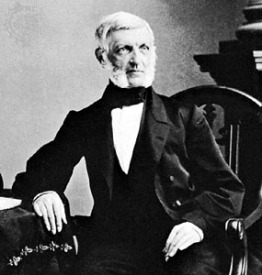 For my research paper, I plan to explore the influence of historian George Bancroft (right) on Antebellum, Civil War, and Postbellum American history. I may need to shave this down a bit depending on how much material I find.
For my research paper, I plan to explore the influence of historian George Bancroft (right) on Antebellum, Civil War, and Postbellum American history. I may need to shave this down a bit depending on how much material I find.
Bancroft was one of the best known American historians of the 19thcentury. While Harvard educated (he entered at 13 and graduated at 17!), he is considered a “literary historian,” who wrote in a style popular with  the public. His primary work was the multi-volume History of the United States from the Discovery of the American Continent, which he began writing in 1830. [Picture left of remaining vHe published the first three volumes over that decade. The final set would be ten volumes. A first revision was completed and published as six volumes in 1876 as part of the national centennial.
the public. His primary work was the multi-volume History of the United States from the Discovery of the American Continent, which he began writing in 1830. [Picture left of remaining vHe published the first three volumes over that decade. The final set would be ten volumes. A first revision was completed and published as six volumes in 1876 as part of the national centennial.
Perhaps less known is that Bancroft, while Secretary of the Navy, created the Naval Academy. He was also chosen by Congress to eulogize Abraham Lincoln. The New York Times reprinted that Eulogy on the occasion of the fiftieth anniversary of the event in 1915. It, along with drawings of the event, can be seen in their entirety here.
I have located the index to his papers housed on microfiche at Cornell University and two biographies which leverage that material. The first, a two volume set 1971 reprint of M.A. DeWolfe Howe’s 1908 work The Life and Letters of George Bancroft, I was able to find on the Amazon Marketplace in almost pristine shape. The second, George Bancroft: Brahmin Rebel, was written by Russel B. Nye and published in 1945. It’s on order. There are other large collections of Bancroft materials in holdings by the Massachusetts Historical Society, the Library of Congress and the New York Public Library. I’m beginning in earnest a search for articles that deal with his contributions to American history as well.
As a follow-up at some later point, I think it would be very interesting to contrast the style and impact 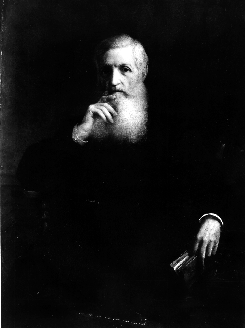 of George Bancroft with Charles and Mary Beard. As a historian friend of mine said, “you’d be hard pressed to find two more different expositors on the American experience than Bancroft and Beard. Bancroft was an unabashed patriot and advocate of democracy, to a degree that would be considered embarrassing in most academic settings today. Still, he was indeed the most articulate and widely-read of our early historians, and his writings both reflected and helped to create the sense of American exceptionalism that has prevailed for most of our history as a nation.”
of George Bancroft with Charles and Mary Beard. As a historian friend of mine said, “you’d be hard pressed to find two more different expositors on the American experience than Bancroft and Beard. Bancroft was an unabashed patriot and advocate of democracy, to a degree that would be considered embarrassing in most academic settings today. Still, he was indeed the most articulate and widely-read of our early historians, and his writings both reflected and helped to create the sense of American exceptionalism that has prevailed for most of our history as a nation.”
You might recall that Charles and Mary Beard were the first to suggest that the Civil War was the second American revolution as was mentioned in my previous post here.
The exceptional oil on canvas portrait above of Bancroft in later life was painted by Gustav Richter, a German painter (1823 – 1884). It is a part of the Harvard University Portrait Collection and is on display at Memorial Hall.
More as I get into my research.
Photo credits:
Photo of George Bancroft in middle age taken by Mathew Brady, courtesy of the Library of Congress.
Photo of painting above: The President and Fellows of Harvard College.

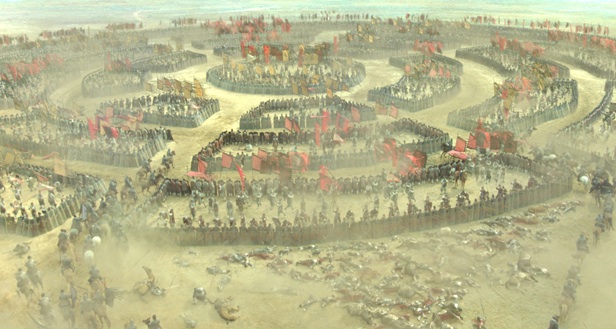
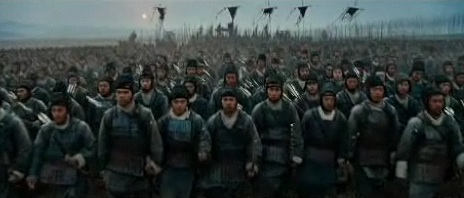
![the-fight-between-the-alabama-and-the-kearsarge-nh59354 "The Fight Between the Alabama and the Kearsarge" [NH59354]](https://wigwags.files.wordpress.com/2008/09/the-fight-between-the-alabama-and-the-kearsarge-nh59354.jpg?w=700)

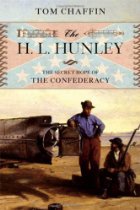
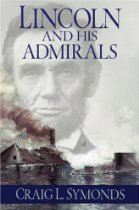
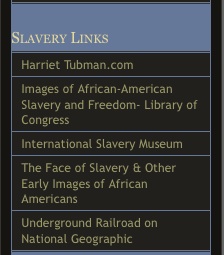












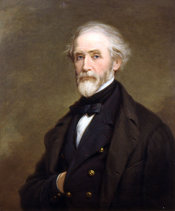




![[Charleston Harbor, S.C. Deck and officers of U.S.S. monitor Catskill; Lt. Comdr. Edward Barrett seated on the turret].](https://i0.wp.com/memory.loc.gov/service/pnp/cwpb/02900/02975r.jpg)















































